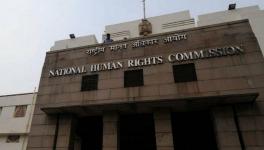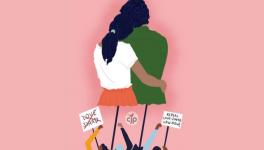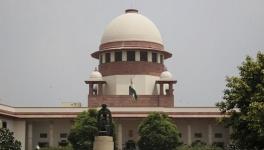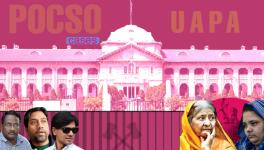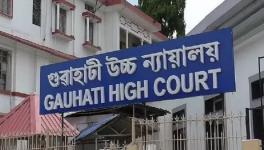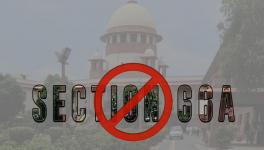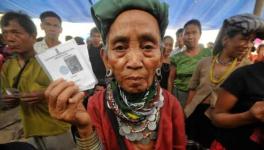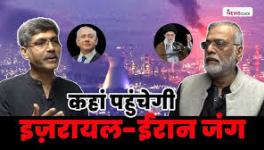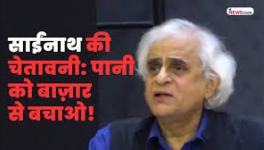School’s Duty to Ensure Minor Girls are not Shackled by Religious Practices: CDC in Hijab Ban Case
Image Courtesy:ndtv.com
February 23 marked the tenth day of the marathon hearing being conducted by the Karnataka High Court bench of Chief Justice Ritu Raj Awasthi, Justice Krishna S Dixit and Justice JM Khazi in the case revolving around a ban on hijabs in schools.
Senior Advocate Naganand continued with his arguments from the previous day while Senior Advocate Sajan Poovayya, representing College Development Committee, also made submission regarding the objective behind having a uniform on campus, which was to maintain secularism and to prevent discrimination.
Senior Advocate S Naganand’s submissions
Senior Advocate Naganand, representing Government PU college, and its principal and lecturers, continued his submissions saying it was not necessary to always wear hijab as claimed by the students. He showed the court the photos on the Aadhaar cards of some of the Petitioners where they are without Hijab. “It is not as though the students are professing that they should be always wearing hijab in public,” he contended.
Spreading of fear
He further submitted that few people from Campus Front of India had approached the authorities on December 30, 2021, insisting they allow the girls to wear hijab. “Campus Front of India is a radical organisation which comes and creates commotion,” Adv. Naganand pointed out, adding, “These organisations even threatened the teachers. They were even scared to lodge the complaint.”
Freedom of Conscience
“Freedom of conscience is that voice which we hear from the recesses of our heart... Freedom of conscience means what your heart tells you. Constitution makers wanted a person to have his own freedom of thought process,” Senior Adv. Naganand told the Court.
He further submitted that autonomy was given to the institutions to decide on the uniform, nothing was prescribed by the government. In this case the decision, on uniforms, was already been taken by the institution in 2004.
Discipline and Public Order
He further submitted that if the decision was taken to maintain public order in an educational institution by a democratic body, then the decision should be followed. He asked, “In orthodox Brahmin sections, after upanayanam, a boy is not supposed to wear shirts, only angavasathram. If tomorrow a category of boys say that want to come like this, what will happen?” He further said, “School has to maintain the discipline. Authority of the school cannot be belittled. The school has to maintain discipline in classroom. Decision is taken bonafide, and it is not questioned for around 18 years. This uniform rule has been there since 2004.”
Article 25
He further submitted that, “No fundamental right is absolute. Article 25 starts with "subject to". My right for peaceful existence cannot be threatened by somebody saying they want to exercise their religious rights.” He even relied upon certain judgements in support of his statement.
He further made a statement that students come to school to gain knowledge, and there must not be any inclusion of external symbols inside the education institute. “In the wisdom of this committee, they take a decision that there should be uniformity. It is good for students because it will rid the students of the overarching influence of religion,” said Adv. Naganand.
He also made a reference to Iran during Shah’s rule. He said, “Tehran was called the Paris of the East. Life there was as flamboyant and luxurious as in Paris. There was no purdah, even though it was a Muslim state.”
He concluded his arguments by submitting that, “This is a simple issue, let children come to school and don't wear the external symbols of religion. Now a right-wing association of Hindus wants to wear saffron shawls. Tomorrow Muslim boys will want to wear skull cap. Where is this going to end?”
Advocate Raghavendra Srivatsa’s submissions
He started his submissions by stating Article 25(1) begins with a restrictive clause. “In America and Australia, the freedom is virtually unrestricted. There is an injunction against the State to not make laws on religious issues. In the present education, we are dealing with secular education within public institutions, therefore different consideration may arise,” he told the Court.
He concluded his submissions by submitting that European Courts have upheld decisions of States in restricting hijab.
Senior Advocate Sajan Poovayya’s submissions
Senior Advocate Sajan Poovayya, represented College Development Committee members (Rathupathi Bhat, MLA, and Yashpal Anand Surana Vice Chairman CDC).
He started his submission by stating that the college is Government funded and the College Development Committee was constituted to provide welfare of the institution in tune with the local requirements.
Religion and Article 28
He submitted that the government aided education is purely a secular activity. He said, “Article 28 of our Constitution clearly states that, ‘No religion instruction shall be provided in any educational institution wholly maintained out of State funds.’ If the State which maintains a college, cannot impart any religious instruction there, can it be also read to mean there can be no religious manifestation that institution?” He further asked the Court, “In other words, can a person getting public education insist he or she has to wear religious attire, even assuming they have established that it is an essential religious practice?”
He also made a submission that schools are trying to maintain a secular outlook. “I have 950 students in my school; out of that 100 are belonging to Muslim faith. Out of that till December none of the students insisted on wearing hijab. Out of these 100 only 5 children insist that they want to wear hijab. Udupi district alone has 12 government colleges; a child can choose to go to a school which does not stop wearing hijab.”
He also stated that it is the duty of the school to provide the best bench mark to its students. Also, it is the duty of the school to protect minor girl students from getting shackled to certain practices. “The decision whether to wear a Hijab is on them when they attain majority. I have a duty to ensure that I achieve secularism,” he told the Court in his submission.
Equality in Uniform
“It does not matter whether you are a Hindu or Kodava, Christian or Muslim, Shia or Sunni. The dress is uniform. When I prescribe a uniform as an institution, religion is immaterial to me,” he said.
He referred to Sabrimala Judgement and quoted Justice Nariman, “peace and tranquility is public order.”
He also told the Court that, “Secular education is not just about academia. Schooling is about overall development.”
Advocate Poovayya referred to a Turkish decision, LEYLA ŞAHİN v. TURKEY; which upheld the restriction on wearing hijab. The decision said:
“Allowing Islamic headscarf in educational institution will amount to discrimination between practicing Muslims, non-practicing Muslims and non-believers.”
Poovayya submitted, “Does this mean that the other 95% Muslim girls who are not wearing Hijab to school are not practitioners of Islam? Is the essence of Islam lost by a lady not wearing Hijab? Or take Hindu faith, if I don't apply tilak or wear saffron attire when I pray, is the essence of Hinduism lost. My conscience says I follow Hindu religion. The attire is just a manifestation.”
He further added that the basic constitutional value as a school is to impart secular education and to protect dignity of a girl child. In support to the statement he said, “In a constitutional scheme, can we dress our girls differently in the name of modesty? Where is the question of modesty for a girl child coming from? Are girls less? Constitution does not say so.”
Adv. Poovayya submitted that secular order has to be maintained by the state and education institution. He said, “To remove the discrimination, you may be rich or poor, Hindu or Muslim; you must wear the same uniform.” Poovayya concluded by stating that even if hijab is Essential Religious Practice, the institution that secures secularism has every right not to allow any religious symbol inside the school premises.
At the conclusion of the hearing, the court clarified that the court’s order only applies to students and not teachers. The court said this in response to Adv Tahir’s submission that even teachers in educational institutions were asked to remove the hijab.
Get the latest reports & analysis with people's perspective on Protests, movements & deep analytical videos, discussions of the current affairs in your Telegram app. Subscribe to NewsClick's Telegram channel & get Real-Time updates on stories, as they get published on our website.











